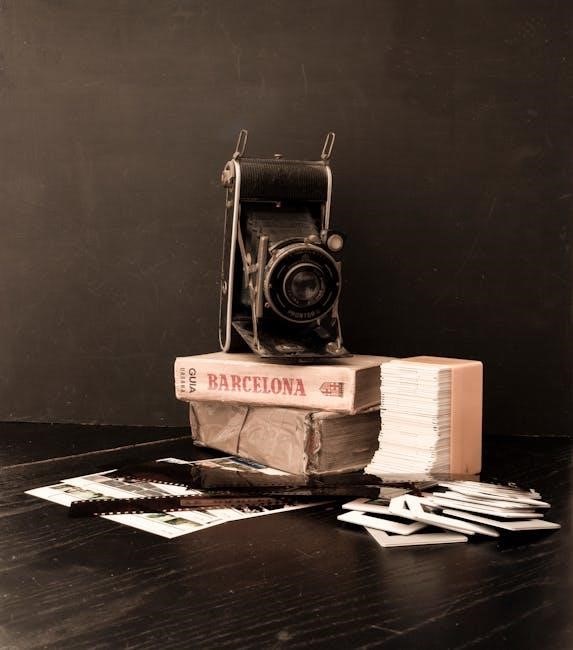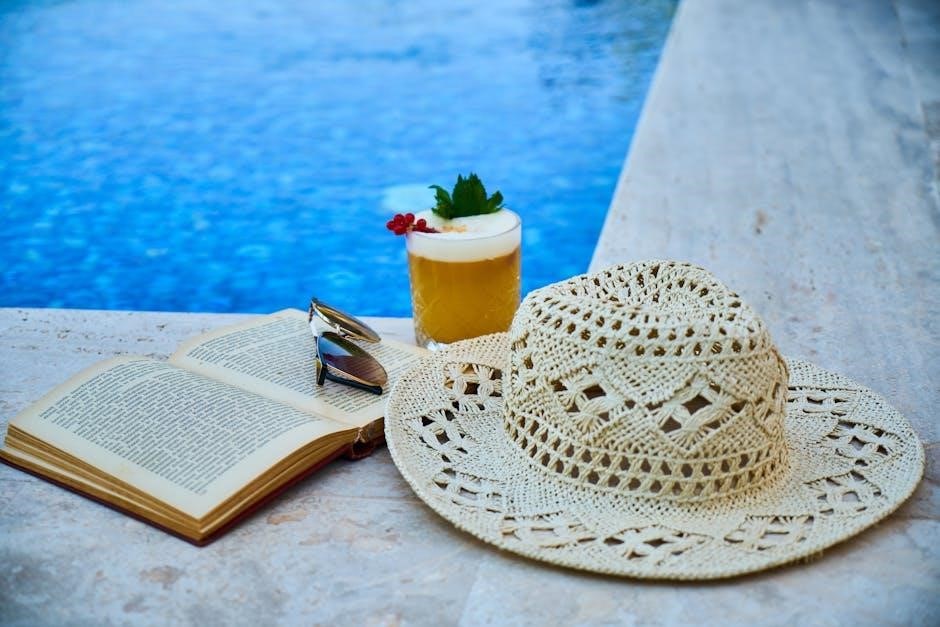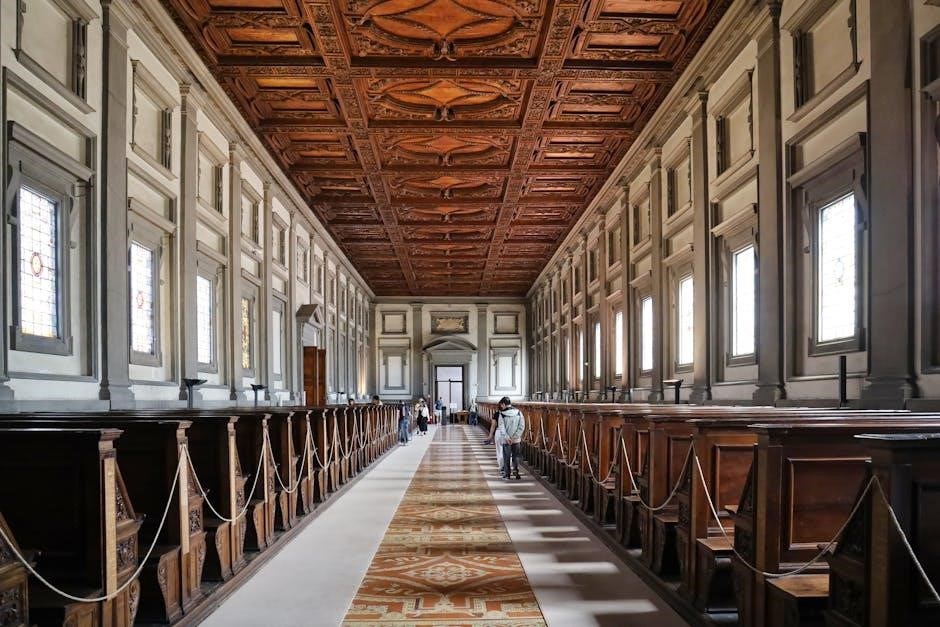
Split, Croatia, is a vibrant coastal city blending ancient history with modern charm. Located on the Adriatic coast, it offers stunning beaches, Diocletian’s Palace, and a lively cultural scene, making it a must-visit destination.
1.1 Overview of Split as a Travel Destination
Split, Croatia, captivates visitors with its rich history, vibrant culture, and stunning Adriatic coastline. This dynamic city offers a mix of ancient ruins, scenic beaches, and lively Mediterranean atmosphere, making it a top destination for travelers seeking both relaxation and cultural immersion. Its well-preserved landmarks and welcoming community enhance its charm.
1.2 Brief History and Cultural Significance
Split’s history dates back to the 4th century with Diocletian’s Palace, a UNESCO World Heritage Site. This ancient Roman palace reflects the city’s rich cultural heritage, blending Roman, Gothic, and Renaissance influences. Over centuries, Split has been shaped by various civilizations, becoming a cultural hub that honors its past while embracing modern life and traditions.

Best Time to Visit Split
Split is ideal to visit in summer for warm weather and vibrant activities, while spring and autumn offer mild climates. Winters are quieter but still charming.
2.1 Climate and Weather Patterns
Split enjoys a Mediterranean climate with warm, sunny summers and mild, wetter winters. Average summer temperatures reach 28°C, ideal for beach activities, while spring and autumn offer pleasant conditions for exploration. Winters are cooler but still enjoyable, making Split a year-round destination with minimal rainfall during peak travel seasons.
2.2 Seasonal Activities and Events
Split offers vibrant seasonal activities. Summer features festivals like the Split Summer Festival, with outdoor concerts and theater performances. Spring and autumn are ideal for hiking Marjan Hill and exploring nearby islands, while winter highlights festive markets and local cuisine. Each season brings unique experiences, catering to diverse interests and travel preferences.

Must-See Attractions in Split
Explore Split’s iconic landmarks, including the ancient Diocletian’s Palace, the scenic Marjan Hill, and the stunning beaches. These attractions showcase the city’s rich history and natural beauty, offering unforgettable experiences for visitors.
3.1 Diocletian’s Palace and Its History
Diocletian’s Palace, built in 305 AD, is a UNESCO World Heritage Site and one of Split’s most iconic landmarks. This ancient Roman palace, constructed as a retirement residence for Emperor Diocletian, combines impressive architecture with historical significance. Its well-preserved structure now houses shops, restaurants, and residences, offering a glimpse into the city’s rich past.
3.2 Marjan Hill and Park
Marjan Hill and Park offer a serene escape from Split’s bustling streets. With lush greenery, scenic trails, and stunning views of the Adriatic, it’s a haven for hikers and nature lovers. The park’s natural beauty and peaceful atmosphere make it a cherished spot for both locals and travelers seeking relaxation and outdoor activities.
3.3 Split Beaches and Water Activities
Split’s beaches, like Bačvice and Ovčice, boast crystal-clear waters and vibrant atmospheres. Popular activities include swimming, snorkeling, and paddleboarding. The lively beach bars and restaurants add to the charm, making Split’s coastline a perfect blend of relaxation and adventure for all visitors.

Accommodation Options
Split offers diverse accommodations, from budget-friendly guesthouses to luxury hotels. Book in advance for best prices and consider options that suit your travel style and budget.
4.1 Luxury Hotels and Resorts
Split’s luxury hotels and resorts offer opulent accommodations with stunning Adriatic views. Properties like Hotel Riva and Palace Judita provide chic rooms, rooftop pools, and fine dining. Located in prime spots, these establishments cater to travelers seeking elegance and comfort, ensuring a memorable stay in this historic coastal city.
4.2 Budget-Friendly Hostels and Guesthouses
Split offers affordable stays in charming hostels and guesthouses, ideal for budget-conscious travelers. Many are centrally located, providing easy access to attractions like Diocletian’s Palace. Options such as Split Hostel offer cozy dorms and private rooms, with amenities like free Wi-Fi and communal kitchens, making them perfect for socializing and saving money during your stay.
4.3 Vacation Rentals and Apartments
Vacation rentals in Split offer a cost-effective and spacious alternative to hotels. From cozy apartments in the city center to seaside villas, these options provide home-like comfort; Many include fully equipped kitchens and terraces with stunning views.Booking in advance often secures better rates, making them ideal for families or longer stays in Split.
Dining and Cuisine
Split’s culinary scene offers a perfect blend of traditional Dalmatian dishes and modern Mediterranean flavors. Fresh seafood, local wines, and authentic eateries make dining a memorable experience;
5.1 Traditional Dalmatian Cuisine
Traditional Dalmatian cuisine is a delightful blend of Mediterranean flavors, emphasizing fresh seafood, olive oil, and herbs. Dishes like peka (slow-cooked meat or vegetables) and paprika showcase the region’s rich culinary heritage. Local wines and fresh ingredients from the Adriatic and surrounding hills create a truly authentic dining experience in Split.
5.2 Seafood Restaurants
Split’s seafood restaurants offer an exquisite culinary experience, showcasing the freshest Adriatic catches. Savor dishes like grilled fish, seafood risotto, and mussels, all prepared with traditional Dalmatian flair. Pair your meal with a glass of local white wine for a truly authentic taste of the region. Don’t miss waterfront eateries along the Riva or Marjan Hill for stunning views while dining.
5.3 Cafes and Coffee Culture
Split’s cafes are vibrant social hubs where locals and travelers gather. The Riva waterfront is lined with cozy spots serving traditional espresso and modern specialty coffees. Popular cafes like Cafe Bačvice offer a warm atmosphere, while others blend historical charm with contemporary vibes, making them perfect for relaxing and soaking in the city’s lively energy.

Day Trips and Excursions
Explore nearby islands like Hvar, Brač, and Šolta, or visit Krka National Park and historic Trogir. These trips offer a mix of natural beauty, culture, and adventure.
6.1 Nearby Islands (Hvar, Brač, Šolta)
The nearby islands of Hvar, Brač, and Šolta offer a perfect escape from Split. Hvar boasts lavender fields and historic architecture, while Brač is famous for its stunning beaches like Zlatni Rat. Šolta provides a tranquil retreat with its secluded bays and charming villages. Regular ferry services make day trips to these islands convenient and enjoyable.
6.2 Krka National Park
Krka National Park is a stunning destination near Split, featuring breathtaking waterfalls, crystal-clear lakes, and lush vegetation. Visitors can explore hiking trails, swim in designated areas, and discover the park’s rich biodiversity. A day trip to Krka offers a refreshing escape into nature, with guided tours and scenic boat rides adding to the experience. Plan ahead and book tickets in advance for a seamless visit, and don’t forget to bring swimwear to enjoy the cool waters during the warmer months.
6.3 Trogir and Salona
Trogir, a historic coastal town near Split, is a UNESCO World Heritage Site known for its well-preserved Romanesque architecture and charming old-world charm. Nearby Salona, an ancient Roman city, offers a glimpse into Croatia’s rich history with its impressive ruins and archaeological sites. Both destinations provide a unique cultural and historical experience for travelers exploring the region.

Budgeting and Financial Tips
Plan your expenses carefully, considering accommodation, food, and activities. Use local currency for better deals and budget accordingly to enjoy Split without financial stress.
7.1 Average Costs for Accommodation and Food
Accommodation in Split ranges from €30-€100 for budget hotels to €200+ for luxury resorts. Meals cost €10-€20 for mid-range dining, with fine dining options starting at €50. Consider budgeting €50-€80 daily for food and activities, adjusting based on your travel style and preferences.
7.2 Money-Saving Tips for Travelers
Stay in budget-friendly accommodations like hostels or apartments. Use public transport or walk to explore the city. Cook meals instead of dining out for every meal. Avoid peak season for lower prices. Take advantage of free attractions like Marjan Hill and Split Riva. Join local Facebook groups for exclusive discounts and tips.
7.3 Split’s Currency and Payment Methods
The official currency is the Croatian Kuna (HRK). Credit cards are widely accepted in hotels, restaurants, and shops. ATMs are readily available for cash withdrawals. Euros are sometimes accepted, but exchange rates may vary. It’s advisable to carry a mix of cash and cards for convenience and smaller transactions.

Cultural Norms and Etiquette
Respect local traditions and greetings. Croatians value hospitality and direct communication. Dress modestly when visiting churches and public spaces to align with cultural expectations.
8.1 Local Customs and Traditions
Split’s culture reflects a strong sense of community, with Sunday lunches often centering around family. Festivals celebrating local saints, like Saint Domnius, showcase vibrant traditions. Respect for elders and communal gatherings are deeply ingrained, highlighting the city’s warm and welcoming atmosphere for both locals and visitors alike.
8.2 Language Basics for Communication
While Croatian is the official language, many locals, especially younger generations, speak English fluently. Learning basic Croatian phrases like “bok” (hello) and “hvala” (thank you) is appreciated. Dialects like Dalmatian are also spoken, adding to the cultural charm. Knowing simple phrases enhances your interaction with locals and enriches your travel experience in Split.
8.3 Dress Code and Social Expectations
Split blend of modernity and tradition influences its dress code. Beaches welcome swimwear, while historical sites like Diocletian’s Palace require modest attire. Dress respectfully for churches and cultural events. In public areas, avoid overly casual beachwear. Locals appreciate polite behavior and greetings like “bok” (hello). Embrace the local vibe for a harmonious experience.

Safety and Precautions
Split is a safe destination, but remain vigilant in crowded areas. Protect belongings, especially in busy spots. Be prepared for emergencies with local contact information handy.
9.1 Crime and Safety Tips
Split is generally safe, but petty theft can occur in crowded areas. Keep valuables secure, avoid displaying wealth, and stay alert in busy spots. Use reputable taxis and be cautious at night. Stay informed about local conditions and follow advice from authorities to ensure a safe and enjoyable visit.
9.2 Health and Medical Services
Split offers efficient healthcare services with modern facilities and English-speaking professionals. Emergencies can be reported by dialing 112. Pharmacies are abundant, well-stocked, and helpful for minor health concerns. Visitors should carry necessary medications and obtain travel insurance to cover medical costs, ensuring a secure and enjoyable visit to Split.
9.3 Emergency Contact Information
For emergencies in Split, dial 112 for general assistance. Police can be reached at 92, ambulance at 94, and fire brigade at 93. The Split Tourism Board also assists tourists with safety concerns. Ensure to save these numbers for quick access during your stay.

Traveler Communities and Resources
Join the Split Croatia Travel 2025 Facebook Group for tips and recommendations from travelers and locals. Online forums and travel blogs provide valuable insights, while local tour guides offer expert knowledge.
10.1 Split Croatia Travel 2025 Facebook Group
The Split Croatia Travel 2025 Facebook Group is a vibrant community where travelers and locals share tips, recommendations, and experiences. Members discuss accommodation, dining, and activities, while also asking questions and offering advice. It’s an invaluable resource for planning your trip and connecting with others passionate about Split.
10.2 Online Forums and Travel Blogs
Online forums and travel blogs offer real-time insights and tips for exploring Split. Platforms like TripAdvisor and Lonely Planet feature detailed reviews, while blogs share personal anecdotes and hidden gems. These resources help travelers discover lesser-known spots, plan itineraries, and gain local perspectives, enhancing their overall experience in Split, Croatia.
10.3 Local Tour Guides and Agencies
Local tour guides and agencies in Split offer expert knowledge, personalized tours, and insider tips. They provide tailored experiences, from cultural walks to adventure tours, ensuring a deeper connection with the city. Agencies handle logistics, tickets, and hidden gems, making your trip seamless and memorable. Book in advance for the best experiences!

Future of Travel in Split
Split’s future travel landscape emphasizes sustainability, technology integration, and evolving traveler preferences, ensuring a balance between preserving heritage and adapting to modern tourism demands and innovations.
11.1 Sustainable Tourism Initiatives
Split is adopting eco-friendly practices, such as waste reduction programs and energy-efficient accommodations, to preserve its natural beauty. Initiatives like bicycle rental promotions and eco-tours encourage environmentally conscious travel, ensuring a greener future for this stunning destination while maintaining its cultural and environmental heritage for future generations.
11.2 Technological Advancements in Travel
Split embraces technology to enhance travel experiences, with smart apps for navigation, contactless payments, and digital guides. Virtual tours and augmented reality are transforming how visitors explore landmarks like Diocletian’s Palace, while eco-friendly transportation options and smart hotel systems further improve convenience and sustainability for modern travelers.
11.3 Emerging Trends in Travel Preferences
Travelers increasingly seek unique, immersive experiences, prioritizing sustainability and local engagement. Budget-conscious planning and eco-friendly accommodations are rising trends. Split adapts to these preferences by offering authentic cultural activities, eco-tours, and community-driven initiatives, ensuring visitors connect deeply with the city’s heritage while supporting responsible tourism practices.
Split, Croatia, offers a perfect blend of history, culture, and natural beauty, making it a must-visit destination. Plan your trip wisely and embrace the city’s charm responsibly.
12.1 Final Thoughts on Visiting Split
Split captivates with its rich history, stunning beaches, and vibrant culture. From Diocletian’s Palace to Marjan Hill, the city offers unforgettable experiences. Plan thoughtfully, respect local customs, and immerse yourself in its beauty. Whether you’re exploring ancient ruins or enjoying the Adriatic, Split promises a memorable journey for every traveler.
12.2 Encouragement to Explore and Discover
Split invites you to embark on an unforgettable journey of discovery. Wander through its historic streets, uncover hidden gems, and engage with the warm local culture. Join communities like the Split Croatia Travel 2025 Facebook group for insider tips, and let the city’s charm inspire your adventure, creating memories that last a lifetime.